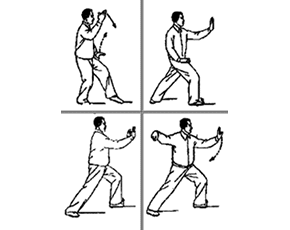
Tai Chi, a popular form of exercise involving stylized and controlled movements, has been advocated as a way to manage pain, maximize function, and improve quality of life for a variety of chronic musculoskeletal conditions, including osteoarthritis, rheumatoid arthritis, and fibromyalgia. However, the evaluation of its efficacy in these conditions has been limited by the small samples sizes of many of the trials performed. Here, Hall et al (Arthritis Care & Research 2009; 61: 717) analyze the pooled effectiveness of Tai Chi in a variety of musculoskeletal conditions across the literature of published studies.
Methods
Electronic databases of the medical literature (published journal articles, books, theses, abstracts, and conference proceedings) were interrogated for randomized controlled trials of all forms of Tai Chi in patients with musculoskeletal conditions with a primary symptom of pain with at least one outcome measure of pain, disability, physical function, or health related quality of life. Meta-analyses were performed on extracted data to calculate pooled effect sizes and confidence limits for the available outcome measures.
Results
From 2,063 identified studies, 7 met inclusion criteria into the meta-analysis. Five of the trials enrolled patients with osteoarthritis, one with rheumatoid arthritis, and one with chronic tension headache. The style of Tai Chi varied between studies, although each used group interventions. Sample sizes for the trials ranged between 16 and 97 patients, and methodologic quality was generally poor.
For pain, 6 of the included studies had available pain scores. The pooled difference in mean pain scores was -10 points on a 100 point scale (95%CI (-14, -6); p<0.001) favoring Tai Chi. Four studies had compatible disability outcomes, with a pooled difference in mean disability scores of -9.6 on a 100 point scale (95% CI (-14, -5); p<0.01) favoring Tai Chi. Two studies had comparable physical performance measures, with no significant difference detected in the pooled physical performance scores between Tai Chi and control groups. Quality of life was measured differently from trial to trial, and thus no pooled estimates were able to be calculated. Most of the studies with quality of life outcomes tended to favor Tai Chi.
Conclusions
Although drawn from generally low-quality studies, Tai Chi appears to have modest but statistically significant favorable effects on pain, disability, and quality of life in individuals with chronic musculoskeletal conditions.
Editorial Comment
Although widely advocated for its benefits in improving pain in a variety of musculoskeletal conditions, trial sample size and methodology have limited a quantitative evaluation of Tai Chi. Although still limited by the quality of the studies and disparate outcomes measured across trials, this meta-analysis is helpful in providing some reasonable pooled estimates of effect sizes for Tai Chi. In general, the effects appear to be relatively modest, although it can be argued that a physical activity intervention that is safe and no cost, such as Tai Chi, would still be beneficial even with modest effect. Additional benefits outside of pain and function, such as fitness and self-efficacy, are also not captured in this study. Importantly, however, this study does suggest that Tai Chi, at least at the group level, is not a panacea for musculoskeletal pain. Additional issues that are not resolved include whether pain and functional outcomes improve with prolonged application of Tai Chi, or whether any safety issues arise with prolonged exposure in those with joint damage and deformity.

